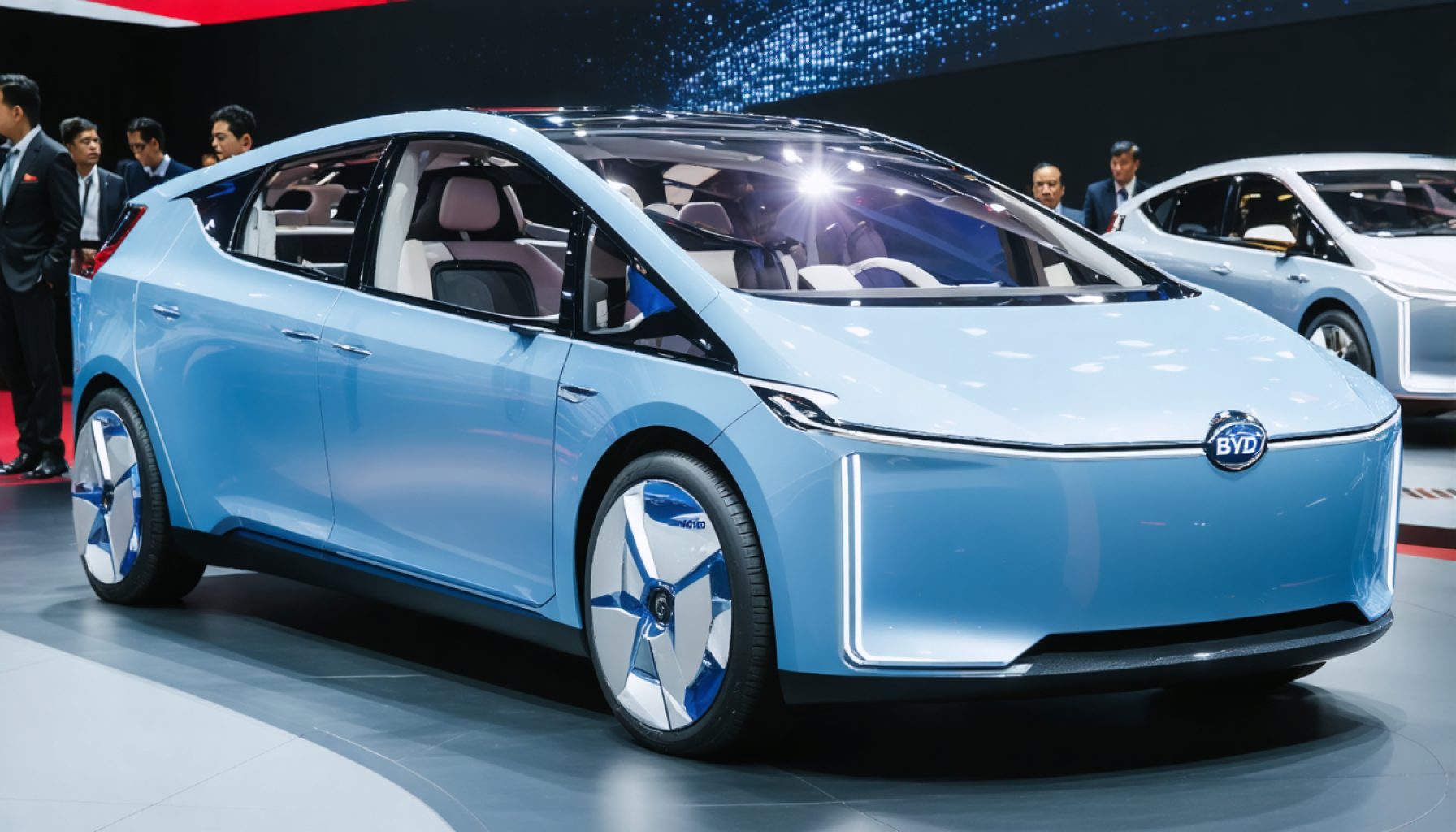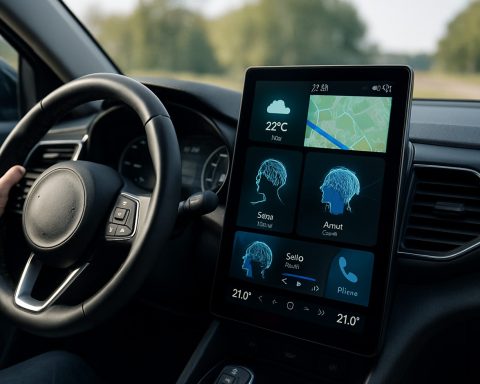- BYD, a major Chinese EV manufacturer, refuted rumors of a $10 billion investment in an Indian manufacturing plant.
- India’s EV market is attractive but challenging due to regulatory barriers, geopolitical issues, and complex economic diplomacy.
- BYD’s presence in India is currently limited to electric buses and modest assembly via their local subsidiary, BYD India.
- The Indian government previously rejected a $1 billion venture between BYD and MEIL due to national security concerns.
- While globally successful, BYD’s expanded operations in India remain cautious, highlighting a broader cautionary tale about foreign investments.
- The narrative illustrates the balance of opportunity and obstacles in India’s EV market, with strategic diplomacy as a key to success.
In a digital storm that saw headlines swirling like leaves in the wind, Chinese electric vehicle titan BYD found itself at the epicenter of a frenzy. Whispered talks of a colossal $10 billion investment in a sprawling manufacturing plant in Hyderabad were abruptly silenced by the company, echoing through the chambers of their official WeChat account. The narratives, BYD contended, were little more than flights of fancy—untethered and unfounded.
This moment is emblematic of the conundrum that foreign giants face as they eye India’s burgeoning electric vehicle (EV) landscape. BYD’s purported foray into India’s market—a sector fueled by a national appetite for innovation and sustainability—is mired in complexity. Despite being a prominent player, BYD’s ambitions are stymied by the intricate dance of diplomacy, policy, and economic maneuvering.
The allure of India’s EV market is undeniable. Amidst a backdrop of spiraling fuel prices and clamorous calls for environmental stewardship, the country has unfurled a banner of incentives to woo global auto magnates. Yet, for enterprises hailing from across the Himalayan expanse, this path is fraught with regulatory thickets and geopolitical brambles.
BYD, steadfast in certitude, continues to assure that no pacts have been inked, nor lands scouted for their metallic cathedral. Despite being a shadow on India’s automotive stage via their local subsidiary—BYD India—the company’s primary footprint lies in the quiet rollout of electric buses and modest assembly operations. Their vehicles, the utilitarian e6 and the sleek Atto 3, do navigate Indian roads, albeit traced back to origins or components far eastward.
Globally, BYD commands fleets in Southeast Asia, permeates markets in South America, and lays roots in Europe’s progressive soil. India, conversely, poses a bastion of caution. The government’s erstwhile rebuff of BYD’s $1 billion venture with Hyderabad’s MEIL casts a long shadow. This venture, which promised to bring new vitality to Telangana’s industrial landscape, was scuttled in the crossfire of national security concerns and an overarching wariness of Chinese infusions at sensitive junctures of the economy.
India’s vehicle electrification journey remains both enticing and treacherous. The challenge for BYD—as indeed for any cross-border aspirant—lies in deciphering this code of conduct, marked by insular hesitations and the overarching need for strategically sound partnerships.
The takeaway rests in the potent juxtaposition of opportunity and hinderance. As the globe eyes India’s EV arena, well-suited for innovation and scalable adoption, BYD serves as a case study in the fine print of economic diplomacy. Their narrative underlines the broader cautionary tale of international investments where understanding and negotiating regional intricacies could spell the difference between visionary success and an ephemeral promise. As the EV race powers forward, firms must decide—will they dare the diplomatic gauntlet for a chance at a prosperous future in one of the globe’s most exciting emerging markets?
BYD’s Cautionary Tale: Navigating India’s EV Market Complexities
Exploring India’s Electric Vehicle Market for Global Players
The incident involving BYD’s reported $10 billion investment in India—later denied—highlights both the allure and intricacies of entering India’s electric vehicle (EV) market. While Chinese automaker BYD boasts significant presence globally, with operations in Southeast Asia, South America, and Europe, its path into India is mired in geopolitical and regulatory challenges.
Key Factors Influencing India’s EV Market
1. Regulatory Environment: India offers significant incentives to EV manufacturers, yet foreign companies face complex regulations. This is compounded by geopolitical concerns, particularly regarding Chinese investments. Understanding these nuances is crucial for any foreign entity considering entering the Indian market.
2. National Security Concerns: The Indian government is cautious about foreign investments that may affect national security. BYD’s proposed venture with MEIL was viewed through this lens, highlighting the importance of strategic compliance and the need for businesses to anticipate and address potential governmental concerns.
3. Market Potential: Despite these challenges, India’s demand for EVs is growing, driven by rising fuel prices and environmental initiatives. The nation aims to increase its share of EVs to meet its sustainability goals, making it an attractive yet tricky market for foreign automakers.
How to Successfully Enter the Indian Market: Steps for Global EV Players
1. Thorough Market Research: Conduct detailed investigations into India’s EV policies, consumer behavior, and competitor landscape to tailor a suitable market entry strategy.
2. Strategic Partnerships: Collaborate with local companies to navigate regulatory environments effectively and gain insights into regional market dynamics. These partnerships can provide vital support in logistics, distribution, and stakeholder management.
3. Adaptation to Local Needs: Design products that meet the specific demands of Indian consumers, considering factors such as pricing, durability, and infrastructure. Customizing offerings to fit local preferences could lead to a competitive advantage.
4. Engagement with Policy Makers: Building strong relationships with governmental entities can aid in understanding and influencing policy changes, ensuring smoother market entry and operations.
Market Forecasts & Industry Trends
– Growth Potentials: India’s EV market is projected to expand significantly in the next decade. McKinsey reports that EV sales could comprise 30% of total vehicle sales by 2030, indicating substantial growth opportunities.
– Technological Advancement: Continuous improvements in battery technology and charging infrastructure are expected to drive market demand and facilitate widespread adoption.
Pros & Cons of Expanding into India’s EV Market
Pros:
– Growing demand driven by sustainability goals.
– Government incentives for EV manufacturers.
– Potential for establishing a large consumer base.
Cons:
– Complex regulatory and political landscape.
– High competition from established domestic manufacturers.
– Infrastructure challenges, including charging network limitations.
Conclusion and Actionable Recommendations
For global EV companies like BYD, entering the Indian market can be both rewarding and challenging. Companies should prioritize strategic partnerships, thorough market analyses, and engagement with policymakers to navigate the complexities and capitalize on India’s promising market potential.
Quick Tips:
– Stay informed about policy changes and adjust strategies accordingly.
– Focus on technological innovation to meet local demands.
– Invest in building robust local networks for smoother operations.
For further insights on global market trends, visit BYD to learn more about their strategies and offerings in the EV space.










